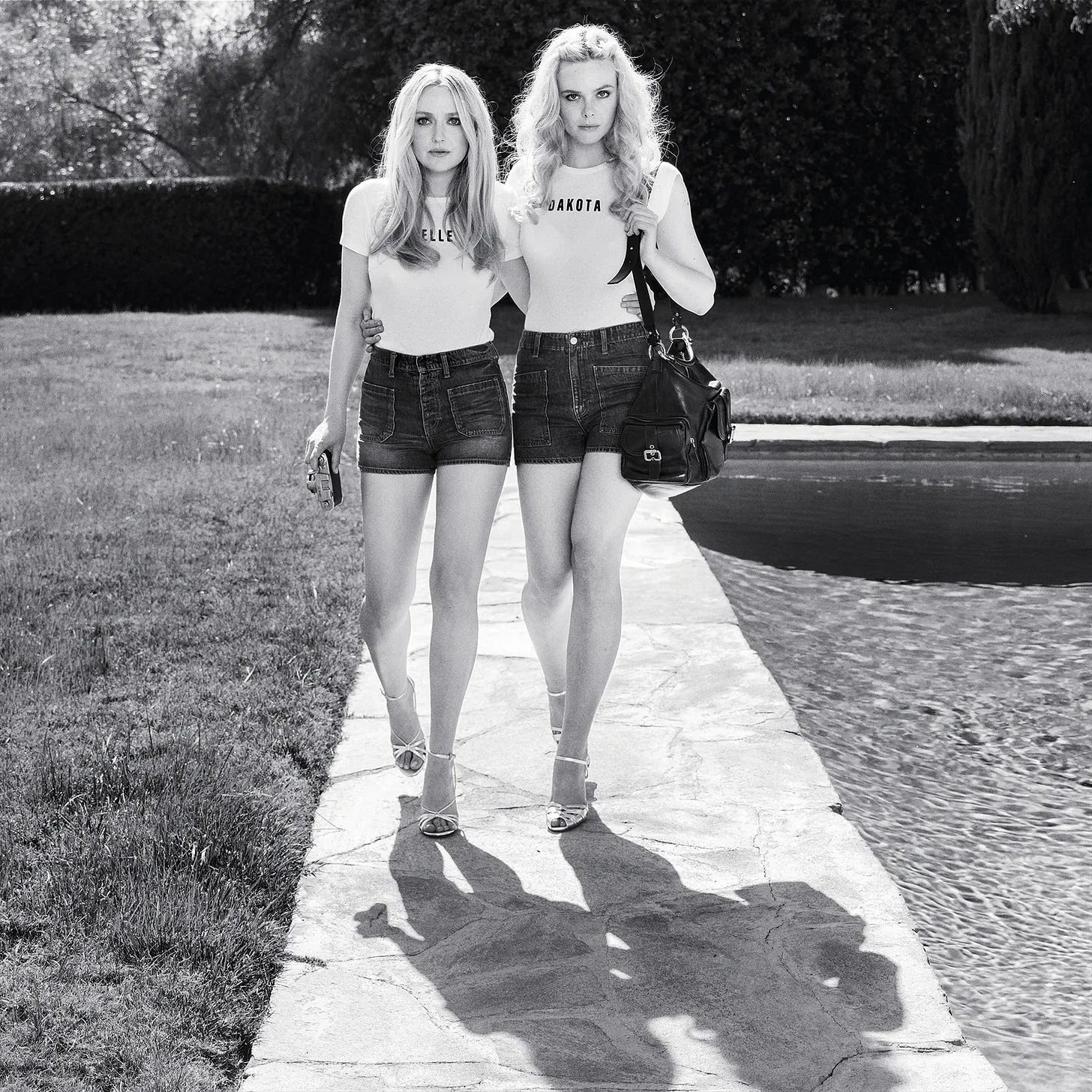Double Your Pleasure
The Paris and Nicky of newsletters is rethinking true crime, searching the heavens for career wisdom, and removing all specific references to our children in this newsletter.
Welcome to Spreadlandia, where two veteran editors read it ALL to winnow out only the best: juicy yarns, big ideas, deeply personal essays, and hot goss—aka, the full Spread. Plus: original interviews, podcasts, and more. Come hungry!
Esteemed Spreadlandians,
Among the endless clichés about writers, the biggest one may be that, ultimately, every interesting thing that has ever happened in your life will become fodder. (Don’t even get our husbands started on that one.) So we were amazed that friend-of-Spread Michelle Ruiz has been sitting on this banger of a story since she was nine years old. The restraint! Ruiz, an excellent celebrity portraitist and all-around crackerjack writer, profiles Jessica Buttafuoco, whom everybody who was alive in 1993—and we’re going to go out on a limb here and assume that includes 99 percent of our readership—remembers as the daughter of Joey Buttafuoco, whose affair with the teenage Amy Fisher led Fisher to shoot Jessie’s mom in the face. Jessie, now 42, is living with her mother in Calabasas and pursuing a PhD in media psychology, researching the specific trauma endured by victims and their families. This story has it all—trauma, true crime, and the formative effects of close proximity to infamy. (It even includes a cameo from Alyssa Milano, who played Amy Fisher in just one of the TV movies about the crime.) But on top of those riches, Ruiz and Buttafuoco were also childhood best friends growing up in Massapequa, NY. And, wait for it: Ruiz was young Jessie’s plus-one for a fateful Saturday Night Live taping in which Joey was ruthlessly parodied by the cast and again by young Jessie’s idol: Madonna, that night’s musical guest. The access is wild. The outcome is hard to forget.
May every writer have a story like this to drag down from the attic of life, thirty years later.
Rachel & Maggie

Fail Fast, Fail Often, Fail Stylishly
So, All the Cool Girls Get Fired is finally, fine-ah-lly here—oh wait, not really, it pubs October 14—after what feels like years of teasing on social media by its publicity savvy coauthors, former editors-in-chief Laura Brown and Kristina O’Neill, who got canned (their words) from InStyle and WSJ mag, respectively. The gist: They’re laying claim to the Silicon Valley mantra that failure is good—hey, at least ya tried!—but this time for women, whose dear, perfectionistic little souls suffer a specific burning shame after any form of rejection, including professional. FACTS. Also facts: Brown and O’Neill are both intimidatingly cool, well resourced (those magnificent highlights!), and hyper-connected, as are most of the women they talk to here (Katie Couric, and uh, Oprah are among them). And: We have not read this book yet. While we crave whatever wisdom it might impart, with more and more of us facing career insecurity (some would say meltdown), and with the looming threat of AI “coming for our jobs,” the possibility of being fired, or found redundant, or just feeling unemployable, has gotten a whole lot more real for a whole lot of people, even in the months since this book went to print. In the words of Carrie Bradshaw—whose airy UES one-bedroom afforded by an Observer contract now almost seems like science fiction—we can’t help but suck the life out of our last existential Marlboro Light and wonder: When we’re down and out, will it really help to know what happened to, say, Monica Lewinsky when she got the axe?
Read “Getting Fired Gets You Into This Cool Girls’ Club” here; preorder the book here.
Hand-Me-Down Princess
“As a child,” writes Rachel Kushner in the New Yorker, “I almost never got any clothes I wanted. I took pleasure in clothes all the same.” When a writer like Kushner signs up for a story about clothes it’s never going to be about clothes, not really. Hers is about yearning—the childhood longing to be something different than we are, to grow up and finally be all the way “into life,” and to wear the right things—something that, as the child of the kind of resourceful hippie mom who wears tops woven on her own loom and looks down on other families’ scrubbed-clean children and spotless houses as “middle-class anxieties,” will be mostly out of reach until Kushner reaches shoplifting age. What comes through most poignantly is the way in which wanting crystalizes memory. If it had been easy for Kushner to just go buy the Candie’s she wanted, would she still recall, decades later, that they were slip-on sandals with a three-inch wooden heel, an upholstered footbed, and toe straps of burgundy suede?
Read “What I Wanted, What I Got” here.
“Is it possible to be ‘art-abused’?”
The brilliant Parul Sehgal, who won an ASME early this year for her New Yorker column that taught us why we were feeling so nervous after reading Sarah Manguso’s Liars, really pinpoints a thing that is happening—examining a quartet of recent memoirs that dive into questions of consent around children who are used in service of their parents’ art. Refreshingly, only one of Sehgal’s examples—Shari Franke, daughter of convicted child abuser and vlogger Ruby Franke—is a victim of social media exposure. The others are Molly Jong-Fast (Erica’s daughter), Susan Cheever (John’s daughter), and Rose Boyt (Lucian Freud’s daughter1). The whole piece is informed by OG child-featuring artist Sally Mann, who is able to acknowledge both the necessity of transgression in art and the fact that she used her children in her work—but can’t reconcile the two.
Keep reading with a 7-day free trial
Subscribe to The Spread to keep reading this post and get 7 days of free access to the full post archives.
